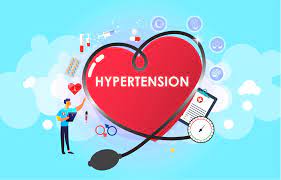The Human Body
This paper will focus attention on aspects of the functions of the human body, which impact more on care delivered by health care settings along with social care settings. Therefore, the paper will critically analyze how the whole body functions. The case study is, however, intended to give a holistic general idea of the composition and performance of the body of human beings. Moreover, the case study aims at educating individuals working in the field of health or social care.
Markedly, along with major vital organs of the body of human beings, the anatomical features of the human body also consist of various biological systems. The first system is the circulatory system, which is responsible for transporting blood, hormones, different nutrients, and gasses such as oxygen and carbon dioxide all over the human body. The circulatory system consists of veins, blood vessels, the heart, the heart, and blood (“Respiratory Structure and Function”, 2012).
The second system is the digestive system, which is made up of interconnected organs, which coordinate in enabling the human body to effectively break down food, absorb then remove the waste. The digestive system comprises of the esophagus, the rectum, the mouth the stomach, the small and large intestines along with the anus. However, the liver together with the pancreas are also influential of activities carried out by the digestive system since they generate juices used in digestion.
The third system is the endocrine system, which comprises of eight main glands responsible for secreting hormones to the blood. The hormones, consecutively, travel through different tissues to regulate different functions of the body, among them, being metabolism, sexual function and also growth. The fourth system is the immune system, which acts as a defense of the body against all bacteria, harmful pathogens and also viruses.
The immune system consists of lymph nodes, the lymphocytes, which include B-cells plus T-cells, the spleen, the bone marrow, the leukocytes and thymus that constitute the white cells of the blood (Kelly, & Ramanan, 2011). The fifth system is the lymphatic system, which comprises of lymph nodes, the lymph ducts, and the lymph vessels. The lymphatic system is responsible for the body’s defense, however, its greatest task is making lymph and moving it. Lymph is a fluid containing white cells of blood, which fight infection in the body.
The sixth system is the nervous system, which is responsible for controlling actions within the body that are both voluntary and involuntary. In addition, the nervous system also sends signals across to diverse body parts. The nervous system comprises of nerves, the brain plus then spinal cord (Hammond-Browning, 2011). The seventh system is the muscular system, which is made up of approximately 650 muscles which facilitate movement, the flow of blood, along with other functions in the body.
The eighth system is the reproductive system, which enables human beings to reproduce. The male system of reproduction consists of the penis, testes, and sperms. The female system of reproduction consists of vagina, ovaries, uterus and eggs. The ninth system is the urinary system, which is used in the elimination of waste from the human body after food ingested by an individual is broken down. The urinary system is made of two kidneys and urethras, a bladder, urethra and sphincter muscles.
The tenth system is the integumentary system, which actually is the largest organ in a human being’s body. The integumentary system consists of skin, hair and also nails. The integumentary system acts the body’s protection against pathogens, different viruses, and bacteria. Moreover, the skin also regulates temperatures of the body and also helps in elimination of waste from the body by the process of perspiration.
AC 1.2: How systems of the human body interact as a way of ensuring growth and proper functioning of the human body.
Systems of the body interact through metabolism. Metabolism is a process that involves all chemical processes taking place in the body of human beings (Berge, 2011). Notably, metabolism is involved in influencing growth in a human being through anabolism. Moreover, metabolism helps the body of human beings to perform efficiently through catabolism. Thus, metabolism in the body of human beings involves building up the body, repairing the body and ensuring that storage takes place within the body of human beings.
Consequently, metabolism is effective in the generation of energy for the body of human beings. For instance, when an individual takes carbohydrates, it is usually in form of starch or in form of sugars. Through metabolism, the carbohydrates taken by an individual are broken to form glucose. The glucose is later broken down through further metabolic processes to form pyruvate which is a compound. Hence, supplementary metabolic processes result in the breaking down of pyruvate to form a molecule known as acetyl-CoA, which is responsible for the production of energy.
The acetyl-CoA molecule rotates around the tricarboxylic acid cycle (Gluckman, Low, Buklijas, Hanson, & Beedle, 2011). Consequently, energy carriers in the body of human beings transport energy through a chain for electron transport, thus generating a chemical known as ATP, which is the energy for human beings. During the breakdown, process water is also given off. Moreover, for the cycle to be complete oxygen along with carbon dioxide is required thus necessitating the breathing process for human beings.
Relevance of the information to a care home
Knowing the anatomy of human beings is relevant to all health care givers. Notably, with information on the anatomy of human beings, one is able to know how the human body is expected to function when in a healthy state (Mansfield, 2012). A health caregiver cannot effectively detect health problems in a patient if he/she does not know how the body functions when normal first. In addition, some of the treatment plan administered to patients relies on the organs of the body which are affected, along with bodily functions which are interfered with.
Notably, the bodies of human beings function just like a machine. Like a machine, the human body has special parts that perform specific functions. Moreover, just like a machine, all parts have to operate in an optimal state collectively for the body to function well. In a machine when one part breaks down, the machine works ineffectively (Burns, 2011). Equally, human beings also operate the same. If a body part is functioning ineffectively then the individual is said to be sick.
Thus, for a health care provider to be able to know what a patient is suffering from, it is mandatory to know how different organs are expected to function first. Furthermore, to know how organs function, it is also important to know their structure. One cannot be able to have reliable knowledge of disease processes along with the effects they have on human beings, without knowing about human structure plus different functions of the human body in advance (Roberts, Lightfoot, & Porter, 2011).
For one to solve a problem, it is recommended to know the root of the problem and the best methods of handling the problem. Notably, a person cannot solve a problem of an organ if they have no knowledge of how the organ works. Just like a car engine, one cannot fix the car engine when it breaks down yet one is not aware of how the engine functions when at its best.
Notably, in a setting of health care, patients, and their family are accustomed to asking about the diseases affecting the patients. Therefore, if a caregiver is not able to answer the questions, then patients and their family lose trust in the caregiver. However, when a caregiver has sufficient knowledge about parts of the human body and the way they function, then it will be easy for the caregiver to explain to patients and their families in understandable words. A person cannot be able to explain a concept they have knowledge about, as it leads to confusion and development of mistrust if one doubts their words.
The human body uses glucose stored from foods taken by individuals to generate energy to be used in contraction of muscles to facilitate movement.
When performing heavy activities such as exercising the human body takes in more oxygen by up to 15 times, this makes a person breathe heavily and fast. The rate at which a person is breathing increases to the point where muscles which surround his/her lungs, have no ability to move any faster.
The muscle tissue is responsible for maintaining uprightness of the human body, facilitating movement, pumping blood and moving food via the digestive area. Muscle cells are usually referred as muscle fibers. Notably, muscle cells comprise of the protein actins, and the protein myosin, which are responsible for the contraction of muscle cells.
AC 2.3: How internal activities within the human body are coordinated by the body
Mostly, internal activities within the human body are coordinated by the body through the nervous system in coordination with the endocrine system. The endocrine system has eight main glands, which emit hormones into the blood (Turney, Lee, & Mehta, 2011). The hormones, in turn, control different bodily functions like growth, sexual function along with metabolism. Conversely, the nervous system regulates actions that are voluntary like movement and also involuntary actions such as breathing.
Reference
Alimova, K. & Shadmanov, T. (2011). Principles of organization, diagnostics, and treatment of children with associated trauma. Medical And Health Science Journal, 5, 68-72. http://dx.doi.org/10.15208/mhsj.2011.84
Berge, L. (2011). Health Care Emergency Management: Principles and Practice. JAMA, 305(2), 200. http://dx.doi.org/10.1001/jama.2010.1982
Burns, D. (2011). Imaging Atlas of Human Anatomy. JAMA, 306(18), 2034. http://dx.doi.org/10.1001/jama.2011.1634
Czepczyńska-Krężel, H. & Krop-Wątorek, A. (2012). Human carcinoembryonic antigen family proteins, structure, and function. Postępy Higieny I Medycyny Doświadczalnej, 66, 521-533. http://dx.doi.org/10.5604/17322693.1004113
Douglas, M. (2011). Health Impact Assessment: Principles and Practice. Journal Of Public Health, 33(4), 635-635. http://dx.doi.org/10.1093/pubmed/fdr073
Electronic medical records aid clinical studies. (2011). New Scientist, 210(2810), 5. http://dx.doi.org/10.1016/s0262-4079(11)60949-4
Gluckman, P., Low, F., Buklijas, T., Hanson, M., & Beedle, A. (2011). How evolutionary principles improve the understanding of human health and disease. Evolutionary Applications, 4(2), 249-263. http://dx.doi.org/10.1111/j.1752-4571.2010.00164.x
Guiding principles developed for global health strengthening. (2011). Leadership In Health Services, 24(2). http://dx.doi.org/10.1108/lhs.2011.21124bab.006
Hammond-Browning, N. (2011). Principles of Medical Law. European Journal Of Health Law, 18(4), 466-468. http://dx.doi.org/10.1163/157180911×585324
Kawashima, T. & Sasaki, H. (2011). Gross anatomy of the human cardiac conduction system with comparative morphological and developmental implications for human application. Annals Of Anatomy – Anatomischer Anzeiger, 193(1), 1-12. http://dx.doi.org/10.1016/j.aanat.2010.11.002
Kelly, A. & Ramanan, A. (2011). The principles of pharmacological treatment of juvenile idiopathic arthritis. Paediatrics And Child Health, 21(12), 563-568. http://dx.doi.org/10.1016/j.paed.2011.07.010
Kilham, H. (2011). Expressing ethical principles of treatment and care in a charter: What value?. Journal Of Paediatrics And Child Health, 47(9), 590-593. http://dx.doi.org/10.1111/j.1440-1754.2011.02158.x
Malumbres, M. (2011). Physiological Relevance of Cell Cycle Kinases. Physiological Reviews, 91(3), 973-1007. http://dx.doi.org/10.1152/physrev.00025.2010
Mansfield, S. (2012). Understanding Health and Social Care – Second editionUnderstanding Health and Social Care – Second edition. Nursing Standard, 26(44), 31-31. http://dx.doi.org/10.7748/ns2012.07.26.44.31.b1380
Montgomery, K., Kim, J., & Franklin, C. (2011). Acceptance and Commitment Therapy for Psychological and Physiological Illnesses: A Systematic Review for Social Workers. Health & Social Work, 36(3), 169-181. http://dx.doi.org/10.1093/hsw/36.3.169
Respiratory Structure and Function. (2012). Respirology, 17, 121-124. http://dx.doi.org/10.1111/j.1440-1843.2012.02300.x
Roberts, M., Lightfoot, E., & Porter, W. (2011). Basal Metabolic Rate of Endotherms Can Be Modeled Using Heat-Transfer Principles and Physiological Concepts: Reply to “Can the Basal Metabolic Rate of Endotherms Be Explained by Biophysical Modeling?”. Physiological And Biochemical Zoology, 84(1), 111-114. http://dx.doi.org/10.1086/658084
Shamsiev, J. (2011). Principles of diagnostic and treatment of echinococcosis in children. Medical And Health Science Journal, 5, 88-90. http://dx.doi.org/10.15208/mhsj.2011.89
Turney, K., Lee, H., & Mehta, N. (2011). Special issue call for papers: Social determinants of child health. Social Science & Medicine, 73(11), 1674. http://dx.doi.org/10.1016/j.socscimed.2011.09.002
WU, J., LIU, Z., WANG, L., LIU, L., ZhANG, Y., & FENG, D. et al. (2011). Age-related changes in expression of human leukocyte antigen-DR and levels of cytokines in peripheral blood mononuclear cells. Chinese Journal Of Multiple Organ Diseases In The Elderly, 10(4), 315-317. http://dx.doi.org/10.3724/sp.j.1264.2011.00007
Want help to write your Essay or Assignments? Click here









